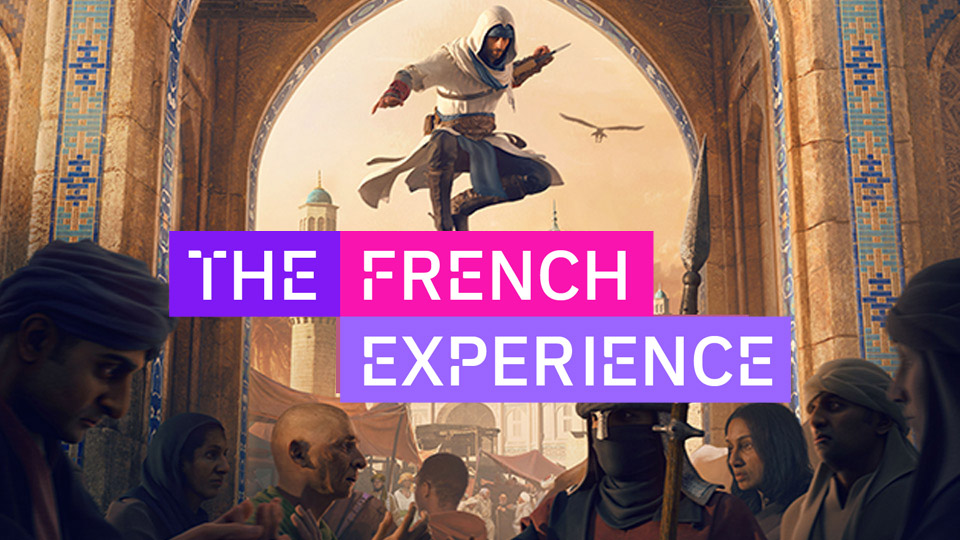The world of “Tchia’’ is inspired by New Caledonia. How important was it to pay tribute to the place where you were born and raised?
Phil Crifo: We realized very early on that our cultural heritage was a creative strength for us, so we made this choice from the start of the project. At the beginning, we didn't plan to create such an ambitious game that would have such a strong impact. The choice to draw inspiration from a relatively unknown culture was in line with our ambitions. When the game began to gain momentum, we wondered if our choices (speaking about a culture unknown by most of the players, recording dialogues in local languages, etc.) would hamper the game’s potential. However, we observed that players but also industry stakeholders (Sony, Kepler, etc.) were fond of new perspectives and stories that were off the beaten track. It was a bit of a risky bet but the bet was won I think.
What questions came to your mind when you decided to create an open-world video game representing this little island in the Pacific Ocean?
We wanted to bring to light the richness and diversity of New Caledonia: its languages, cultures, traditions, legends, fauna and flora, but also its incredibly multifaceted landscapes and ecosystems. When we embarked on this project, we already knew we were not going to exactly recreate New Caledonia. For technical reasons of course, but also because our approach was to capture the “essence” of the country and spread it into a more condensed and accessible gaming environment. Some of the island’s iconic places seemed obvious to integrate (Poule de Hienghène, Roche Percée, etc.), but we also wanted to show the archipelego’s landscapes and biomes’ diversity (dry forests, savannahs, red earth deserts, etc.). New Caledonia today is not just wild nature: the presence of men has also shaped the landscapes and it was important for us that the game highlights this reality, hence the presence of towns, villages, factories…
The gameplay itself is based on New Caledonian folklore and legends. Obviously?
Not necessarily. We drew inspiration from some symbols and concepts ingrained in the collective imagination and local legends, but above all we wanted to tell a unique and personal story. The challenge was to avoid being hemmed in by local myths, which could have prevented us from telling something universal. Our story and gameplay include local references, but we have always given ourselves the freedom to create the game we wanted. I think we managed to find the right balance between celebrating local culture and creating something original.
“Tchia’’ is an ambitious game. What challenges did you face in terms of design?
This is our first project of this scale and our first 3D open-world game. We approached it with a little naivety and a lot of passion. We had everything to learn. After defining the concept and developing a demo, we quickly measured the game's potential. From there, we chose an abounding, expressive and rich design. This was a real challenge for the team mainly made up of juniors with no experience in the video game industry. We learned a lot.
Have you recruited talent from New Caledonia?
Among the dozen Awaceb employees, six are Caledonian. It’s a core that was important for us to preserve when we developed “Tchia’’, but we also want to create a multicultural studio. It’s incredibly beneficial to have varied teams in the studio. A few New Caledonian video game projects are emerging, but it remains quite difficult for young designers to get started. I hope that “Tchia’’ will open up new perspectives. I will be following the development of New Caledonian video games very carefully in the coming years, as well as the projects coming from the rest of Oceania, a fast-growing territory in the industry.
“Tchia’’ has been compared to “Zelda’’ a lot. Was that the idea from the start, and do you see any connections between your game and Nintendo’s?
[Shigeru] Miyamoto always says that “Zelda’’ came to him from his childhood that he spent exploring Japanese nature and discovering the caves in the countryside around his home. This is exactly where “Tchia’’ comes from: the game is an allegory of our childhood spent on a tropical island with the joys of discovery and exploration. I think this shared background gives “Tchia’’ and “The Legend of Zelda’’ license a similar DNA in terms of atmosphere and design philosophy. “The Legend of Zelda: Breath of the Wild’’ (“BOTW’’) was released while we were working on the “Tchia’’ prototype; Nintendo’s game is a reference for us because they have been able to capture the open-world genre since its beginnings on PlayStation 2. We grew up with these games, an ever-lasting source of references, and a benchmark against which we can measure what works in this “new” genre.
“Tchia’’, available on Steam, PS4 and PS5.
The game benefited from the Support Fund for Video Game.





